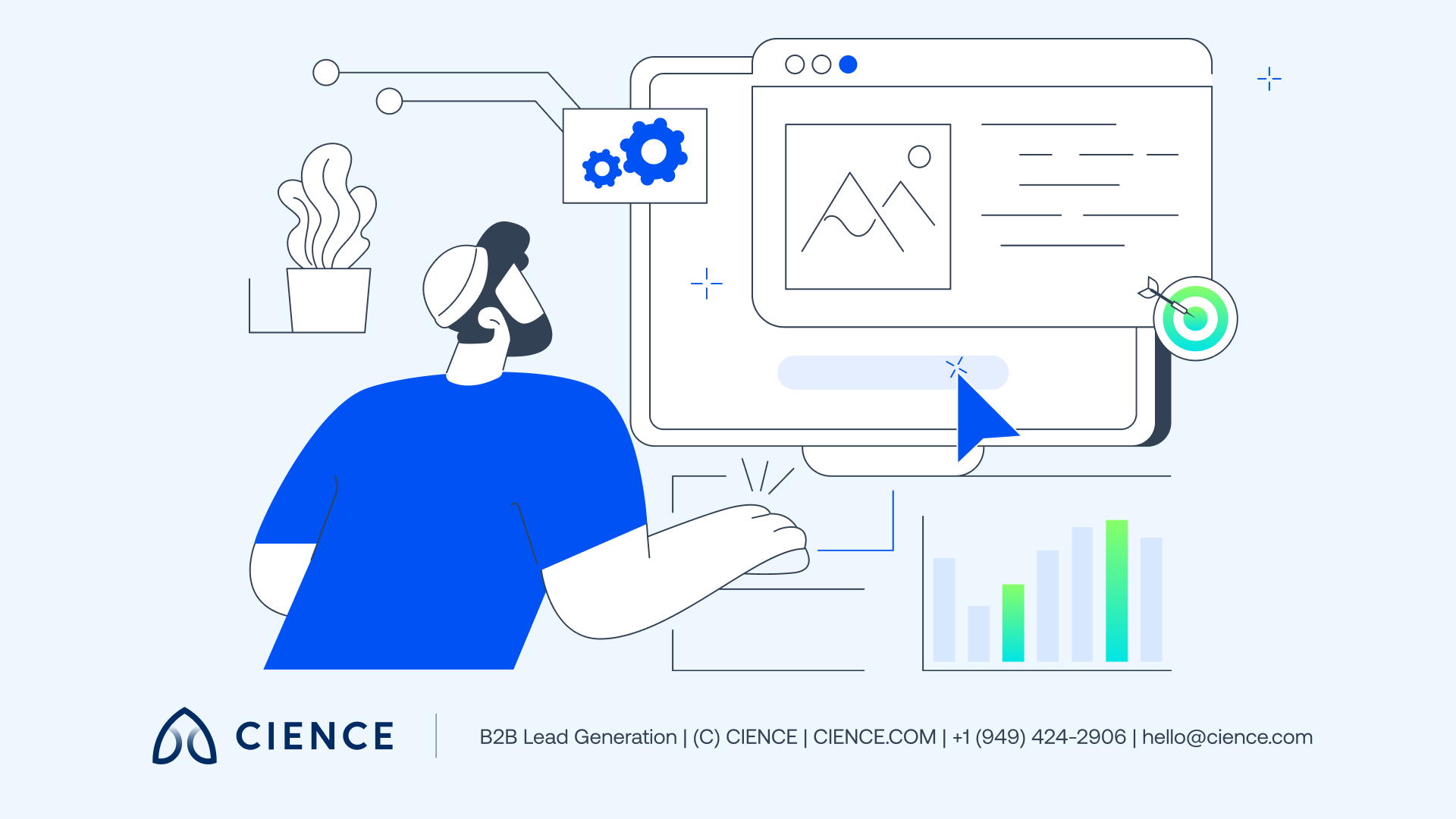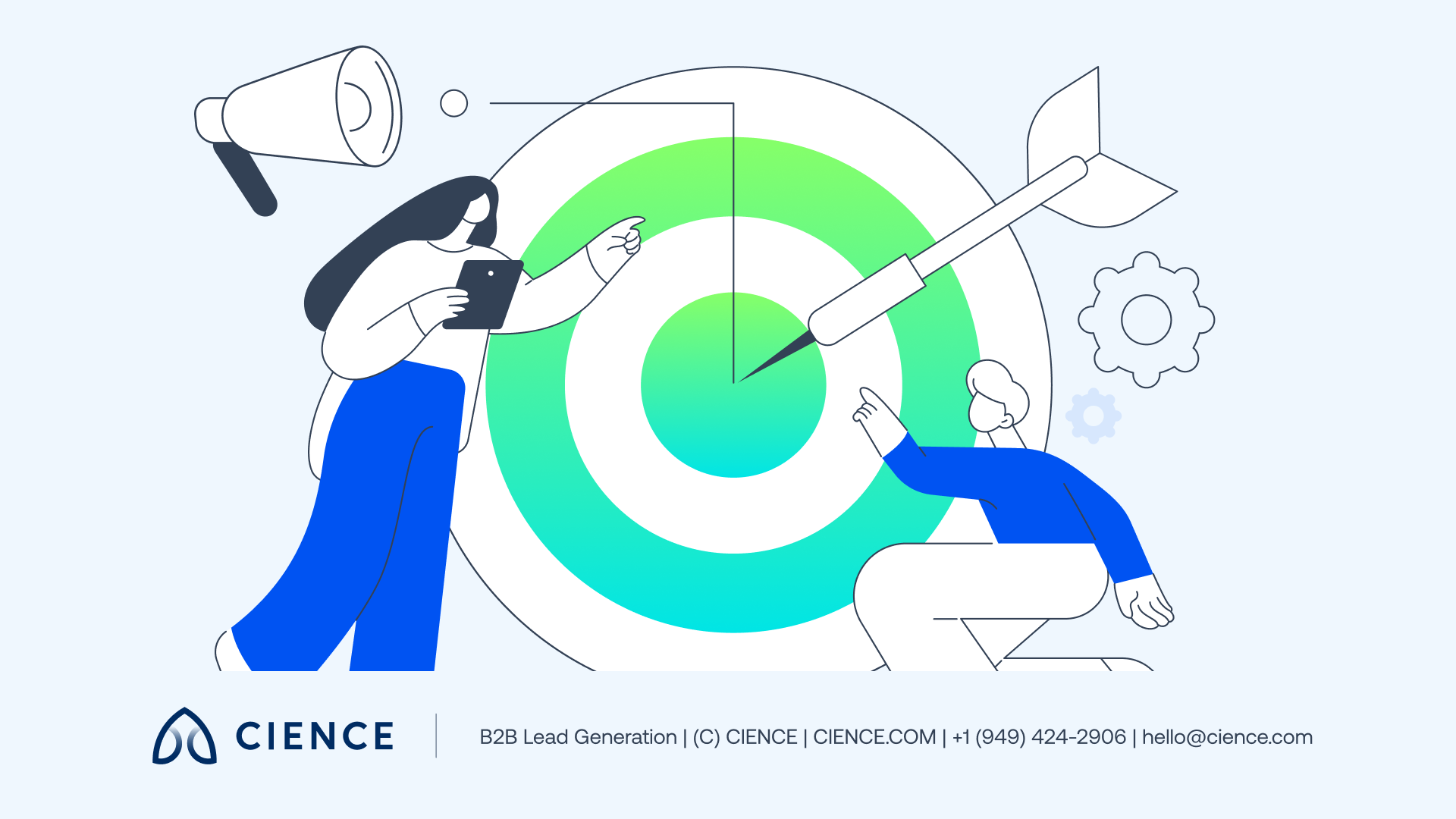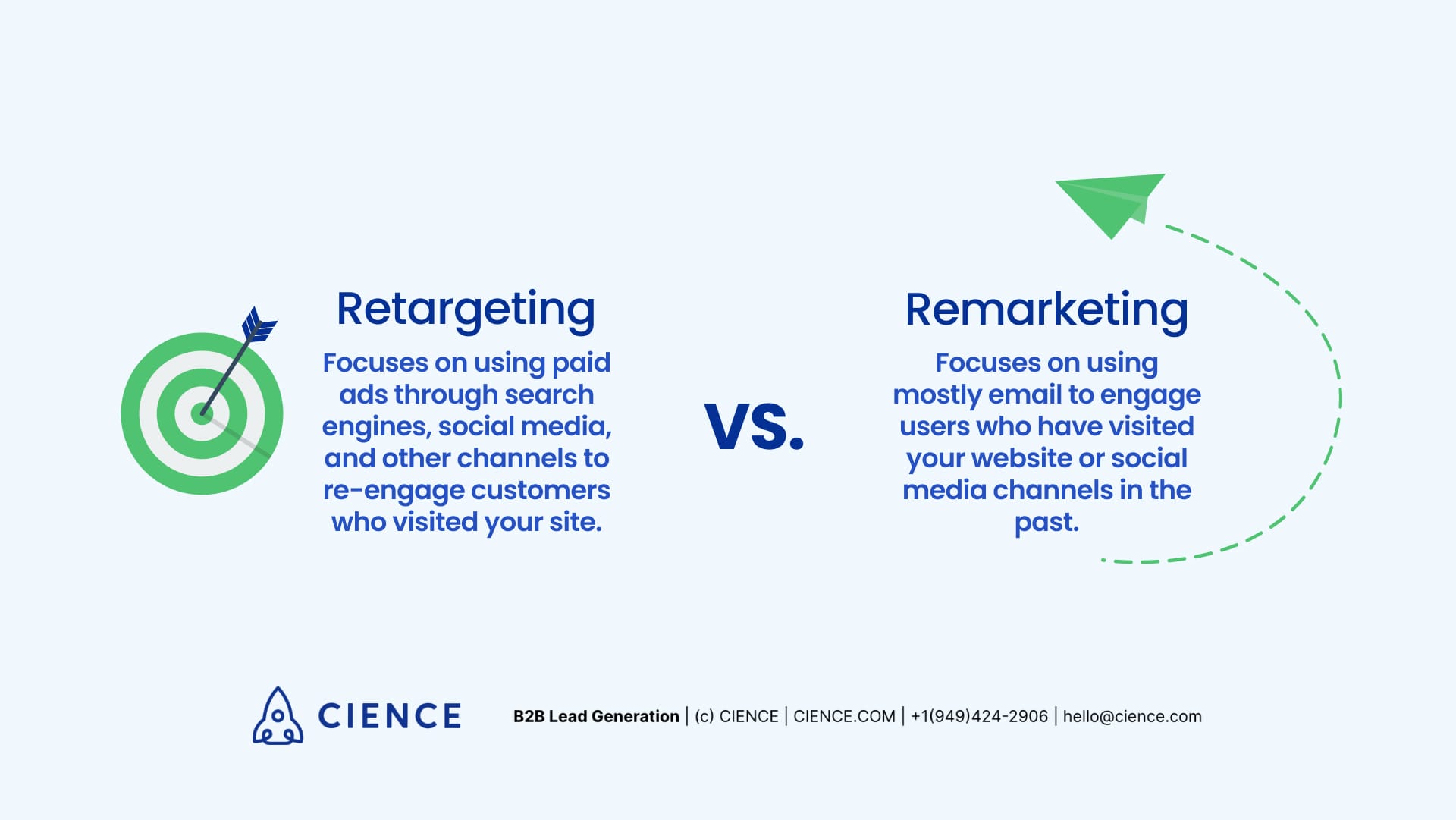Retargeting vs. Remarketing: Which Strategy to Choose?
B2B marketing is increasingly becoming important as global marketing spending is expected to reach $4.7 trillion by 2025. Despite these record spending levels, generating leads in B2B marketing is no joke! It’s like playing a high-stakes poker game with an unseen opponent. You have to constantly stay on your toes and employ different methods to stay ahead in the game.
This is due to oversaturation, as clients are exposed to too many messages from too many sources. So, it has become difficult for brands to stand out from the rest and generate leads.
If you don't believe me, then take a look at these stats:
- 85% of B2B marketers consider lead generation their number one challenge.
- 68% of B2B marketers struggle to generate high-quality leads.
- The average conversion rate for B2B website visitors to leads is 2.35%, indicating a vast majority aren't converting.
- 78% of B2B clients say they only want to engage with those businesses that provide valuable content and insights, emphasizing the importance of building trust and expertise.
- 57% of B2B decision-makers feel ignored by salespeople, revealing a gap in building meaningful connections.
- 65% of B2B customers say the sales experience is what influences their loyalty to a brand, showcasing the importance of personalized and positive interactions.
So, what's the solution?
Well, in their quest to generate leads, retargeting and remarketing can guide B2B marketers like a lighthouse that guides the ship through treacherous waters.
Both retargeting or remarketing have similar goals, which is to re-engage with potential businesses who have shown interest in a product or service.
However, their approach is different, and for a B2B marketer, it is extremely important to understand the distinction between the two.
Retargeting vs. Remarketing: Are They Different?
In this section, we will explore in detail the difference between remarketing and retargeting. Let’s start with their definitions.
What is Retargeting?
Retargeting allows you to send targeted ads to businesses who have previously visited the website to research your product or service but didn't complete a purchase action. For some reason, they left. Retargeting aims to re-engage and convince them to return and complete the purchase or subscribe to the services they previously didn’t.
Here is one of the retargeting ad examples: Imagine a B2B client researching cloud-based solutions for their business. While visiting a website, they are retargeted with ads showcasing the benefits of the cloud-based solutions, key features, and subtly encouraging them to request a demo. This is called retargeting.
Explore Our Precise Ad Targeting Approach
What is Remarketing?
Remarketing takes a broader approach towards engaging with businesses. It goes beyond ads and uses different channels like email campaigns, content marketing, social media, search engine marketing, video marketing, direct mail to build and nurture a long term relationship with the clients.
Here is a remarketing example: In a B2B context, a potential lead who has interacted with a software company’s website might receive a personalized email containing relevant case studies, white papers, and exclusive insights curated to their industry, aiming to nurture the lead through educational content and convert them.
For further explanation, the image below will show you the key differences between retargeting and remarketing.

It is important for B2B marketers to understand these nuances as it will allow them to strategically deploy retargeting and remarketing to address specific needs in lead generation and build long-term relationships with the clients.

Retargeting and Remarketing: Key Findings
Retargeting and remarketing have become powerful tools in B2B marketing. Here are some key findings that showcase their effectiveness.
Overall performance
- The global retargeting software market is expected to reach $8.87 billion by 2029, showcasing its continued growth.
- Retargeting can increase conversion rates by up to 161% for a single campaign, and 10% across industries.
- Retargeted ads can boost engagement by 400% compared to regular display ads.
- 90% of marketers agree that retargeted ads perform as well as or better than other digital marketing options. Only 13% are dissatisfied with their ROI measurement.
Specific channels and platforms
- Facebook and Instagram: 77% of marketers use retargeting on these platforms, making them the most popular choice.
Cost per click (CPC): Retargeted users are 8x cheaper to reach per click compared to regular display ads.

How To Utilize Retargeting and Remarketing Effectively
Here are some of the best practices for using retargeting and remarketing advertising effectively in B2B marketing.
Behavior Segmentation
Retargeting: Divide your clients based on what actions they have taken while visiting your website. For example:
- What pages have they visited
- What product did they view
- What items did they abandon in the cart
- What type of content did they engage with your website
- Did they initiate the form but didn’t submit it
- How much time they spent on the website
- Have they purchased something from your website previously
- Which specific campaign did they interact with the most
By dividing your clients based on these actions, you will be able to create a retargeting campaign that is extremely accurate and relevant to their interests.
Remarketing: Come up with a category of your clients based on how they interacted with your brand. For example:
- If they engaged with your email campaign, did they open the mail, click on the links, or download the attachments in it?
- How did they consume your content? Was it a website, blog posts, white papers, or videos?
- How was their engagement on social media, such as likes, shares, comments, or clicks on social media ads?
- If you organized a webinar, how much was their attendance or registration status?
- Analyze your CRM data for information on client interactions, past purchases, or service interactions.
- You can also collect data from offline interactions such as events, conferences, or direct sales engagements.
- What kind of reviews or ratings did your product or service receive from the clients?
Creating categories of clients based on these interactions will help B2B marketers create a strategy that aligns with the client’s behavior across different channels.
Dynamic Retargeting
B2B marketers can use dynamic retargeting to show ads on products or services that the client came across while visiting their website. This will ensure that the visual content shown is relevant to their interests, thus increasing the likelihood of capturing the client's attention.
Remember, the ad you create should highlight all the important features, benefits, and unique selling points of your product or service. It should resonate with the client's interest if you want to bolster your brand's value proposition and nudge them towards revisiting the website once again.
Furthermore, dynamic retargeting will also allow you to make changes to the ad based on client behavior. For example, if they have visited multiple products or explored different categories, then in such situations, you can adjust the ad to showcase their different interests. This will create a more personalized experience.
Additionally, suppose the client has shown interest in a specific category of product. In that case, dynamic retargeting will allow you to show other products of a similar category that align with their preferences.
Lastly, dynamic retargeting will let you display the exact products that the client added to their cart but didn't purchase. You can also add limited-time offers, discounts, or additional incentives to convince them to make the purchase.
There are other use cases as well.
- Dynamically adjust email content to show products or services that are aligned with the preferences of the business.
- Deliver personalized content recommendations based on the client’s behavior. This will ensure that the content aligns with their interests and preferences.
- If a client clicks on a specific product category, dynamically tailor follow-up messages or offers that are related to that category, increasing engagement in return.
- If a client clicks on a specific product in a retargeting ad, dynamic retargeting will ensure that the landing page reflects that specific product, thus providing a seamless experience.
- Analyze past behavior and engagement patterns to dynamically tailor content and recommendations that align with what businesses will likely be interested in next.
Dynamic retargeting will empower B2B marketers to create highly personalized and relevant experiences for other businesses.

Remarketing and Retargeting Benefits
- Precise targeting by letting B2B marketers focus on those businesses who have already shown some interest, significantly increasing the relevance and effectiveness of their messaging.
- Continuous engagement through tailored ads and messages to better nurture the leads. This will allow B2B marketers to gradually move potential clients through the sales funnel, thus increasing the overall conversion rates.
- It will boost your brand recognition through repeated exposure, which will keep it in the minds of potential clients, increasing recall and engagement.
- Get a higher ROI as you will target a pre-qualified audience, thus saving resources in the long run.
Leverage Retargeting and Remarketing for B2B Success
Both retargeting and remarketing have one common goal, which is to convert those clients who are most likely to purchase from your brand, just that they leverage different approaches to achieve the same objective.
Retargeting focuses on those businesses who have interacted with your brand but have not yet purchased via paid ads.
Remarketing focuses on re-engaging existing clients through email campaigns and reaching out to those who have already had previous interactions, thus allowing for more specific upselling.
